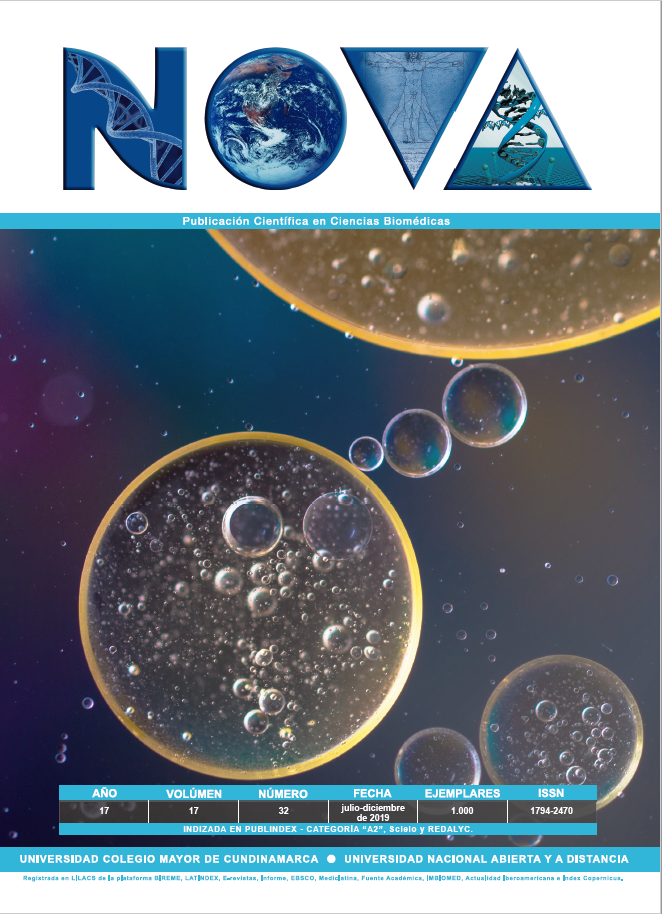NOVA por http://www.unicolmayor.edu.co/publicaciones/index.php/nova se distribuye bajo una licencia Reconocimiento No Comercial- Compartir igual
Así mismo, los autores mantienen sus derechos de propiedad intelectual sobre los artículos,
Declaración de privacidad.
Los nombres y las direcciones de correo electrónico introducidos en esta revista se usarán exclusivamente para los fines establecidos en ella y no se proporcionarán a terceros o para su uso con otros fines.
Staphylococcus aureus
Staphylococcus aureus is a microorganism characterized by being the main cause of nosocomial bacteremia in different places of the world, due to the different virulence and pathogenicity factors. One of the most important is the biofilm formation, which greatly favors bacterial resistance. For the adhesion of the biofilm to biotic and abiotic surfaces, the microbial surface components recognizing adhesive matrix molecules (MSCRAMM), these proteins play a key role in host cell colonization and invasion by the bacteria.









